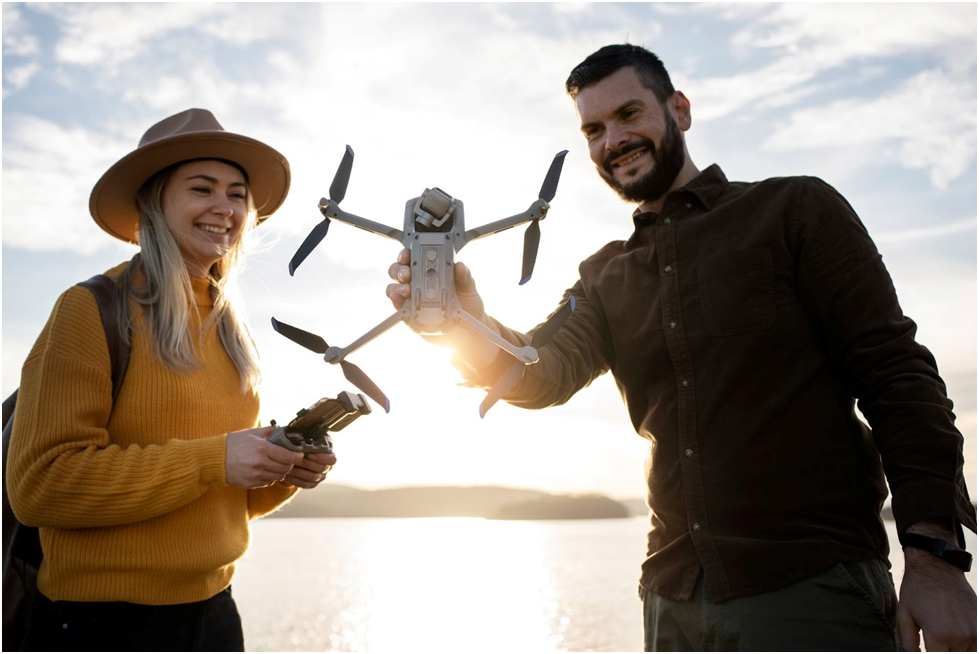FAA Part 107 Made Easy: Essential Tips to Pass Your Drone Pilot Test
By Damon Johnson, Raising Drones
Let’s face it—taking the FAA Part 107 test to become a certified commercial drone pilot can feel a little intimidating at first. Trust me, I’ve been there. Back when Raising Drones was just an idea flying around in my head, I had to tackle the same test. But here’s the good news: with the right prep and mindset, you can absolutely pass this exam—and maybe even enjoy the ride.
Whether you’re a future drone business owner, an aerial photo enthusiast, or just someone tired of flying for “fun only,” this guide will break down the essentials in plain, simple language. No confusing jargon. No pilot’s dictionary needed. Just real, honest advice from someone who's walked the walk.
What Is the Part 107 Test Anyway?
The FAA Part 107 exam is your ticket to legally fly drones for business in the United States. If you're making money with your drone—whether it’s shooting weddings, inspecting roofs, or creating YouTube content—you need this license.
The test has 60 multiple choice questions, and you need a score of 70% or better to pass. You’ll take the exam in person at an approved FAA testing center.
🛸 Pro Tip: You don’t need to be a genius or a pilot to pass. You just need to study smart and stay focused.
What Does the Test Cover?
This isn’t just about “how to fly a drone.” You’ll be tested on airspace rules, weather, drone regulations, emergency procedures, and more. Think of it like getting your drone driver’s license—except the “roads” are in the sky.
Here are the main topics:
Airspace classification and flight restrictions
Weather and METAR reports (don’t worry, we’ll keep it simple)
Drone loading and performance
Emergency and safety procedures
Radio communication and airport operations
FAA regulations and drone laws
🧠 Tip: The test isn't trying to trick you—but it will test whether you’ve done your homework.
Study Smart, Not Hard
You don’t need to drown in textbooks or spend months studying. But you do need to focus. I always recommend spending about 2–3 weeks preparing, depending on how much time you can give each day.
Here’s what works best:
Use a good course. At Raising Drones, we offer training to walk you through everything in an easy-to-understand way. But if you're looking for alternatives, check out Remote Pilot 101 or Pilot Institute. Both are beginner-friendly and FAA-compliant.
Watch helpful videos. One of my favorites is Tony Northrup’s YouTube guide—great if you learn better by watching than reading.
Read the FAA’s study guide. The official FAA Part 107 Study Guide is free and a must-have reference.
Take practice tests. This is key. Repetition builds confidence. Sites like UAV Coach and King Schools offer solid practice exams that mimic the real test.
Pro Tip: Don’t just memorize answers—understand why they’re correct.
Watch Out for These Common Mistakes
Even smart drone pilots trip up on the Part 107 test because of a few easy-to-miss details. Here are the biggest trouble spots:
Airspace confusion: Know the difference between Class B, C, D, E, and G. And yes, G is the one you’ll probably fly in most often.
METAR madness: METAR weather reports can look like a secret code. But once you learn the basic parts (wind, visibility, cloud cover), it becomes clear.
Reading sectional charts: These are the FAA’s maps of the sky. They look scary at first, but with a little guidance, they’re totally manageable.
TFRs and NOTAMs: Temporary Flight Restrictions (TFRs) and Notices to Airmen (NOTAMs) keep the skies safe. You need to know how to check them before each flight.
Test Day Tips
You’ve studied, you’ve practiced, and now it’s game time. Here’s how to keep your cool on test day:
✅ Get a good night’s sleep. No cramming the night before.
✅ Bring proper ID. You’ll need a government-issued ID to check in.
✅ Read each question carefully. Don’t rush. Many wrong answers happen because people skim.
✅ Trust your gut. If you’ve studied, you know more than you think.
Once you pass, you’ll apply for your certificate online through the FAA IACRA website. It usually takes a few days to get your Remote Pilot Certificate.
Final Thoughts
Getting your Part 107 license might feel like a big step—but it’s also the first step into an exciting world of drone opportunities. From real estate photography to roof inspections to mapping and more, having your commercial license gives you freedom, flexibility, and some serious credibility.
At Raising Drones, we believe in making this journey fun and doable for everyone. Whether you’re brand new or just brushing up, we’ve got your back with training, resources, and straight-up honest advice.
Remember—this test isn’t the end. It’s just the beginning of your journey in the drone industry.
The sky isn’t the limit. It’s just the starting point.
Fly safe,
Damon Johnson
Founder, Raising Drones
www.raisingdrones.net
Helpful Resources:

